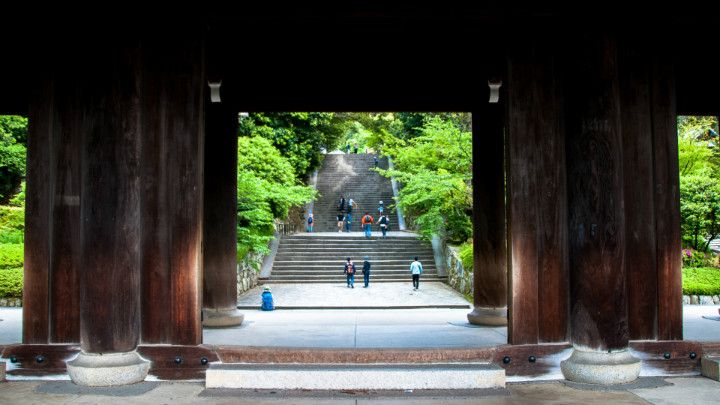Chion-in


(Source: Kissy / PhotoAC)
San-mon
San-mon, temple gate, is said to be the oldest existing wooden architectural structure in Japan. Its structure, 24-meter-tall and 50-meters-wide, is covered by a whopping 70,000 roof tiles. The upper part of the structure, serving as a hall preserving many Buddha statues, carries a solemn air.

(Source: twitter)
Miei-do
Miei-do is a main hall of Chion-in which accommodates 2,000 worshipers. No entry is permitted until 2019 due to its restoration process but just looking at the grand architecture overwhelms the visitor. This majestic temple, 35 meters in depth and 45 meters in width, has welcomed countless worshippers over the past 400 years.

(Source: ◆京都生まれの気ままな遁世僧、「今様つれづれ草」。◆)
Hojo Teien
Hojo Teien is a garden developed in 1641 that surrounds two hojo (abbot chamber), large and small, that serve as living quarters for the monks. The reflection of the trees of the Higashiyama mountains situated in the back of the temple is seen on the water of the big pond. It is a perfect example of the sophistication Japanese have devised to present the beauty and elegance in their culture and art. This beautiful landscape, rich in ambiance specific to each season, will fascinate any visitor.

(Source: twitter)